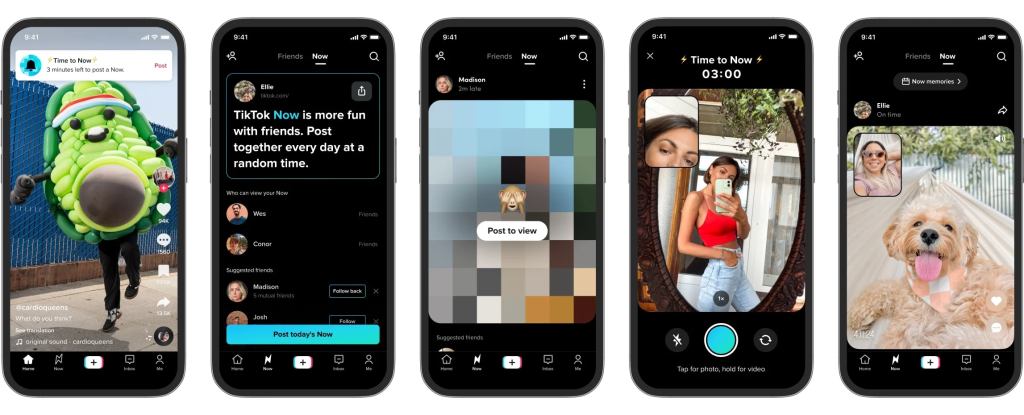
In the emerging social media contents, TikTok has become a global sensation app that is often used by marketers, business owners, and influencers with several contents featuring short videos that typically has 15 seconds to 3 minutes long. There are millions of viewers across the world that uses this tool to create share, discover new, and connect. However, this platform must continuously adapt with the laws, customs, and regulatory frameworks of the country in which it operates as this can bring negative effects of not doing so just like what happened with the banning of TikTok to users across India, Indonesia, and Pakistan due to content-related issues. According to Zahn (2023), TikTok and hundreds of other Chinese applications were completely banned in India in 2020 due to concerns about data privacy and national security. The social media platform has also come under increased scrutiny and criticism because to its Chinese ownership and popularity among young users. Although specific governance issues have been raised with TikTok platform details, content moderation is an important issue for many digital platforms (Zeng & Kaye, 2022). The main reason that is often involve is due to the large base of young users. According to Muliadi (2020), it is estimated that more than 60% of TikTok users belong to the group of Generation Z.
In this hypertextual multimedia essay, the complex relationship between TikTok influencers and content moderation will be further explored to examine its implications in the emergence of social media platforms. By going deeply into the complexities of this subject topic, this seeks to underscore the conundrum that social media platforms, particularly TikTok, encounter when attempting to strike a balance between the right to free expression and the prevention of online harm.

The Emergence of TikTok Influencers Content
With the most downloaded applications worldwide in 2020 and 2021 listed by Forbes, reaching 1506 million downloads which is more than Instagram, TikTok is considered to be the fastest growing social network during the pandemic (Koetsier, 2020, 2021). With its prominence, influencers have also arisen and grown its population. Social media has become increasingly popular for consumers, and they use it to obtain information that underpins their choices. Therefore, there was a rise in the number of users who considered TikTok influencers to be guides and influences on their lives. Personal experience that contains pictures, videos and activities is used to establish an influencer identity. (Sokolova & Kefi, 2020). The social media users are going to connect with the accounts that shows opinions of influencers who have leadership voices, because it provides them with all kinds of helpful information that they can use (Audrezet et al., 2020).
There is also an opportunity for TikTok to be used as a channel of influencer marketing, given that it has huge growth, its format and content characteristics are very good at reaching younger users with important consumer potential. When making videos that promote closer and more casual connections with followers, ‘TikTokers’ frequently mimic everyday activities or execute them. TikTok is a platform where alternative methods of persuasion based on emotional cues could prove highly effective in influencing the decisions or mindset of the viewers. The platform’s primary publication format of brief, informal videos, the use of humor to entertain viewers, and the emphasis on a very young audience are all indicators of this.
Freedom of Expression vs. Harmful Contents
Traditionally, social media platforms have been seen as a powerful force for good, liberating free speech and enabling human connections but this view has changed in recent years. A very limited number of large internet companies play the role of gatekeepers that control what thousands of people are seeing and speaking about online. These policies directly affect the dynamic nature of content distribution and online media diversity and freedom of expression. The question then arises as to how far TikTok should regulate its content? A difficult role is balancing the freedom of expression with the prevention of spreading harmful material.
Thus, TikTok’s content moderation policies are at the edge of whether to protect free speech or rein in dangerous content. The content of influencers can have considerable influence on an extensive range of audiences, given that they become more visible and influential. TikTok further states that, regardless of its intention, it is also necessary to remove as a matter of urgency harmful misinformation which constitutes inaccurate or false content and causes serious harm to individuals, their communities or the wider public (Tucker, 2022).
According to the research report of Wang (2020), If TikTok is actually prohibited this will not only hamper the competence in the tech industry but also lead to a more weakened internet and a move toward an authoritarian style of internet governance. This splinternet effect would violate TikTok’s hundreds of millions of users’ First Amendment rights and be detrimental to global consumer and corporate interests. According to York (2022), this has already begun to take root and it is having a significant impact on over one billion people. For instance, when you stay in China and try to scroll online, you will only have limited social media platforms but you are going to have an access instead of the “safe” version implemented in the Chinese government.
Algorithmic Amplification
It is a fast-moving field of content moderation. The regulatory environment is constantly changing, social media companies are updating their policies on a regular basis, and international organizations are launching initiatives to find global or regional solutions to online content problems. Content moderation must also be constantly adapted to real-world challenges such as the Covid 19 outbreak, international and non-conflictual armed conflicts or new products and technologies. In shaping how users consume content, TikTok’s algorithm has a key role to play. TikTok is using a number of different factors to narrow down your interests and distinguish between the things that intrigue you, as well as what doesn’t. First of all, TikTok takes a look at how you get in touch with the app as a user. For instance, those you are following, type of interests, and the videos you’re sharing. The presentation of content that corresponds to users’ interests is intended to enhance user engagement. But harmful content may inadvertently be disseminated to an increasingly wide audience through this algorithm amplification. This pose dangers especially to teens who may tend to show interest on sad and upsetting contents. According to the research of Sha and Dong (2021), it was noted that TikTok has caused depression and anxiety among teens and that most male genders tend to get easily affected by this.
On Its Way Forward
Indeed, the emergence of social media platforms have posed challenges especially in balancing a strike with the content moderation on the platform to navigate without leaving harm to its users. TikTok is one of the prominent platforms that grapples in the complex balance between enabling free expression and avoiding online harm to its users. Thus, TikTok influencers or content creators must bear a vigilant sense of responsibility in following the guidelines. As digital technology continues to evolve, the platform must prioritize transparency by providing clarity in communicating its policies by providing concrete explanation for removal of certain contents and other data relevant to its moderation efforts.
References
Audrezet, A., de Kerviler, G., & Guidry Moulard, J. (2020). Authenticity under threat: When Social Media Influencers Need to Go beyond self-presentation. Journal of Business Research, 117(1), 557–569. https://doi.org/10.1016/j.jbusres.2018.07.008
Koetsier, J. (2020). Here Are The 10 Most Downloaded Apps Of 2020. Forbes. https://www.forbes.com/sites/johnkoetsier/2021/01/07/here-are-the-10-most-downloaded-apps-of-2020/?sh=626bd9345d1a
Koetsier, J. (2021). Top 10 Most Downloaded Apps And Games Of 2021: TikTok, Telegram Big Winners. Forbes. https://www.forbes.com/sites/johnkoetsier/2021/12/27/top-10-most-downloaded-apps-and-games-of-2021-tiktok-telegram-big-winners/?sh=2b5259c93a1f
Muliadi, B. (2020). What The Rise Of TikTok Says About Generation Z. Forbes. https://www.forbes.com/sites/forbestechcouncil/2020/07/07/what-the-rise-of-tiktok-says-about-generation-z/?sh=35544ac46549
Novak, S. (2023). TikTok’s Algorithm and How It Affects Your Viewing Experience. Discover Magazine. https://www.discovermagazine.com/technology/tiktoks-algorithm-and-how-it-affects-your-viewing-experience
Sha, P., & Dong, X. (2021). Research on Adolescents Regarding the Indirect Effect of Depression, Anxiety, and Stress between TikTok Use Disorder and Memory Loss. International Journal of Environmental Research and Public Health, 18(16), 8820. https://doi.org/10.3390/ijerph18168820
Sokolova, K., & Kefi, H. (2020). Instagram and YouTube bloggers promote it, why should I buy? How credibility and parasocial interaction influence purchase intentions. Journal of Retailing and Consumer Services, 53(1). https://doi.org/10.1016/j.jretconser.2019.01.011
Tucker, E. (2022). TikTok’s search engine repeatedly delivers misinformation to its majority-young user base, report says | CNN Business. CNN. https://edition.cnn.com/2022/09/18/business/tiktok-search-engine-misinformation/index.html
Wang, J. (2020). From banning to regulating TikTok: Addressing concerns of national security, privacy, and online harms. https://www.researchgate.net/publication/344584442_From_banning_to_regulating_TikTok_Addressing_concerns_of_national_security_privacy_and_online_harms
York, D. (2022, March 23). What Is the Splinternet? And Why You Should Be Paying Attention. Internet Society. https://www.internetsociety.org/blog/2022/03/what-is-the-splinternet-and-why-you-should-be-paying-attention/
Zahn, M. (2023). TikTok faces bans in US and other countries. Here’s why. ABC News. https://abcnews.go.com/Business/tiktok-facing-bans-us-countries/story?id=97528047
Zeng, J., & Kaye, D. Bondy V. (2022). From content moderation to visibility moderation: A case study of platform governance on TikTok. Policy & Internet, 14(1). https://doi.org/10.1002/poi3.287

